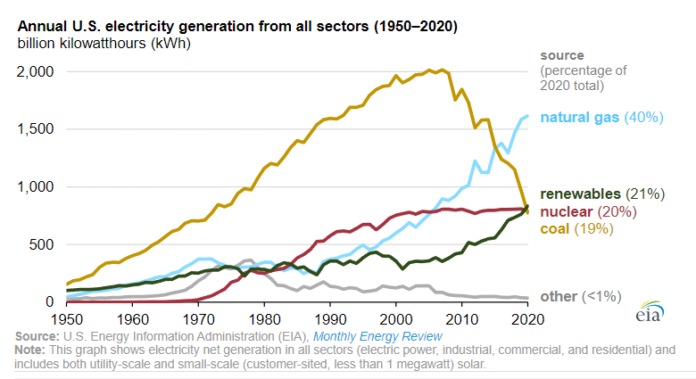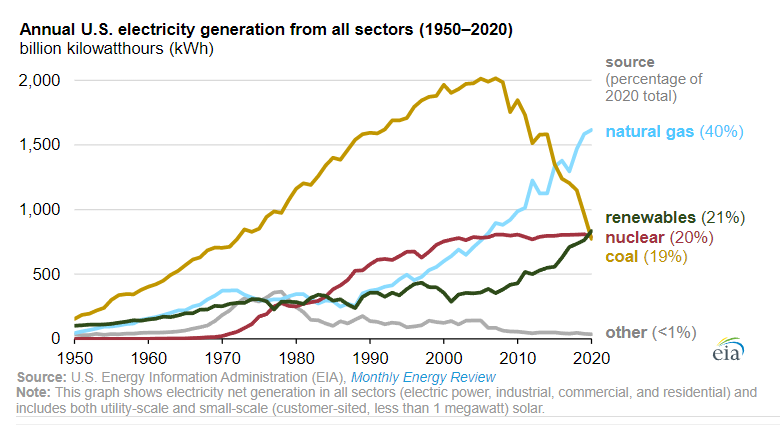
In 2020, renewable energy sources – including wind, hydroelectric, solar, biomass and geothermal energy – generated a record 834 billion kWh of electricity, or about 21% of all the electricity generated in the United States, according to the U.S. Energy Information Administration (EIA). In 2020, the United States produced more electricity from natural gas (1 617 billion kWh) than renewables. For the first time ever, renewables outperformed both nuclear (790 billionkWh) and coal (774 miliardekWh) This result in 2020 was mainly due to the significant reduction in U.S. coal use and the steadily increasing use of solar and wind.
U.S. electricity generation from all sectors of coal declined 20% in 2020, while renewables, which include small-scale solar, increased by 9%. Wind, currently the largest source of renewable electricity, grew 14% from 2019. The 26% increase in utility-scale solar generation from projects larger than 1 megawatt was a significant improvement, while the 19% increase in small-scale solar (such as grid-connected rooftop panels) was a significant improvement.
The United States’ coal-fired electricity generation peaked at 2,016 Billion kWh in 2007. Since then, much of that capacity was replaced or converted to natural gas-fired power generation. The United States’ largest source of electricity was coal until 2016, and 2020 was the year that more electricity was produced by renewables and nuclear power (according to our data collection that dates back 49 years). The decline in nuclear electric power was due to the retirement of several nuclear power plants and other maintenance-related outages.
EIA projects that coal-fired electricity production will rise in the United States by 2021, as natural gases prices continue to rise and coal becomes more economically attractive. Based on forecasts in EIA’s Short-Term Energy Outlook (STEO), it expects coal-fired electricity generation in all sectors in 2021 to increase 18% from 2020 levels before falling 2% in 2022. EIA projects that the U.S. will see an increase of 7% and 10% in renewable generation in all sectors in 2021 and 2022. EIA predicts that coal will be the second most prevalent source of electricity in 2021 and that renewables will be the third-most popular source of electricity in 2022. EIA predicts that nuclear power will decline by 2% in 2021, and 3% by 2022, as operators retire many generators.
